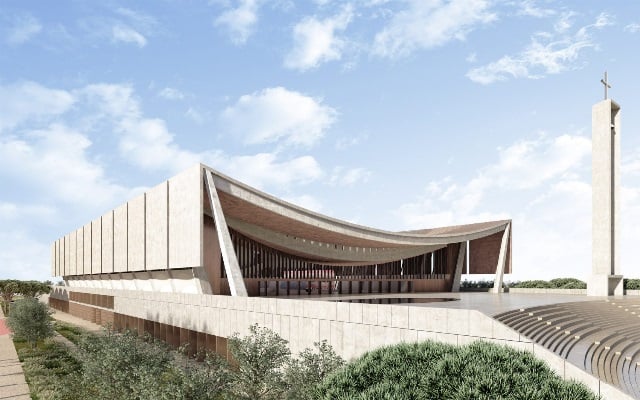The sacred cow of promises has turned into a financial Frankenstein, devouring the future of Ghana’s children. Ghanaians need to raise their voices louder.
The National Cathedral project in Ghana has become a symbol of mismanagement, financial irregularities, and the pitfalls of promises made in the name of faith. Initially budgeted at $100 million, the costs have ballooned to a staggering $350 million, with projections suggesting the final price tag could far exceed $1 billion. With less than 10% completion on the design and foundation, over $100 million has already been expended. This situation exemplifies a dangerous economic principle known as the “sunk costs fallacy,” which suggests that merely because significant resources have already been allocated, one ought to continue investing in a venture that is unlikely to yield positive returns. This article delves into the troubling aspects of this project through the lens of four critical arguments against its continuation.
First and foremost, the project originates from what can only be described as a dubious divine commitment. Former President Nana Akufo-Addo claimed to have vowed to construct a Cathedral if he won the presidency in 2016; however, he did not clarify that this promise would fall on the shoulders of Ghanaian taxpayers. This framing raises significant ethical questions. Should a leader’s personal pledge to God burden the public purse without their consent? This not only betrays the trust of the citizens but also conflates personal beliefs with public responsibility, ultimately placing an unfair financial burden on the very people the project is meant to serve.
Secondly, the project has been marred by a shocking absence of financial scrutiny. Audits have revealed troubling discrepancies in payments made to contractors and consultants, with millions unaccounted for. For instance, a recent audit report from Deloitte and Touche indicated unexplained variances in payments to various contractors, raising serious concerns about financial governance. While resources that could be targeted towards social and economic development are being funneled into this grandiose structure, the lack of transparency and accountability in the spending illustrates a disregard for prudent financial management by those in power. This neglect borders on financial recklessness, especially in a nation where many people still lack access to basic services like healthcare and education.
Moreover, the notion that the government would only provide “seed money,” with the expectation that the Cathedral would rise on the back of private donations, has proven to be misleading at best, and a flat-out lie at worst. The emphasis on self-sustainability has been vanquished by the reality that very few contributions have materialized. In fact, the government has committed nearly $100 million, contradicting prior claims that taxpayers would not shoulder the burden. This divergent narrative underscores a significant disconnect between what was promised and what is being presented as reality. The notion that the Cathedral could become a self-sustaining entity is further undermined by the financial history of similar institutions worldwide, which often rely heavily on subsidies, fundraising, and donations to stay afloat.
Finally, the claims surrounding the potential tourist appeal of the Cathedral are, quite frankly, overly optimistic. Proponents of the National Cathedral argue that it could draw tourists in the same way that Rome’s religious monuments do. However, such comparisons ignore the deeply entrenched cultural and religious significance attached to the cathedrals of Europe. A mere structure, regardless of its size or design, is not sufficient to invoke the same reverence or interest among visitors. The historical context and the spiritual significance that established cathedrals carry cannot simply be replicated. The Basilica of Our Lady of Peace of Yamoussoukro in Côte d’Ivoire serves as a cautionary example; it boasts an impressive design and relatively low visitor numbers, demonstrating that grandeur alone does not equate to financial viability.
In light of these four critical arguments, the misleading nature of the divine pledge, the evident mismanagement of funds, the disinformation about financing, and the questionable viability of attracting tourists, becomes increasingly clear that the National Cathedral project is not only a financial drain but also a moral and ethical quandary.
Ultimately, Ghanaians deserve projects that meaningfully address pressing social needs rather than a costly venture rooted in political promises and religious aspirations.
-The ongoing audits and investigations should pave the way for a necessary reckoning regarding this contentious monument. After all, the true essence of faith is not in imposing burdens on the people in the name of God, but in uplifting and serving them with integrity and accountability.
You can’t make silk out of a pig’s ear. No amount of money or grandeur can turn a flawed project into a success.
A house built on lies will crumble under scrutiny.


